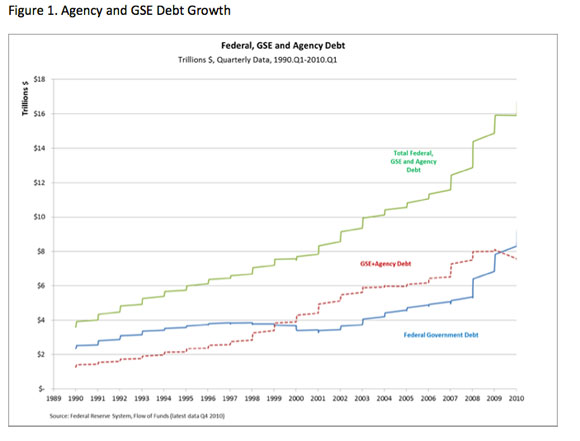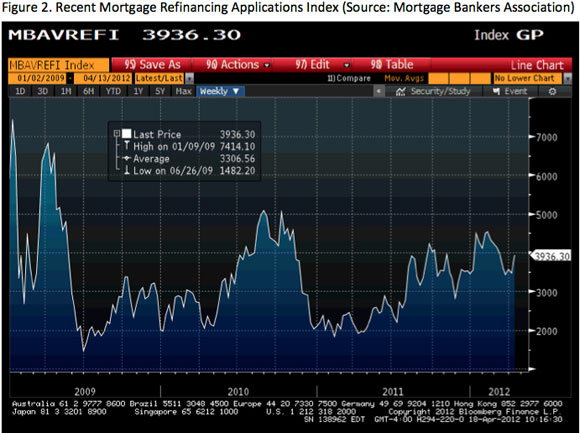- | Financial Markets Financial Markets
- | Federal Testimonies Federal Testimonies
- |
HARP's Uncharted Waters
Testimony Before the U.S. Senate Committee on Banking, Housing, and Urban Affairs
Let us be wary of creating another Jurassic Park policy change. We are in unchartered waters for housing finance and Federal Reserve policies and any further changes should be enacted with extreme caution.
Senator Menendez and distinguished members of the Committee, my name is Dr. Anthony B. Sanders and I am the Distinguished Professor of Finance at George Mason and a Senior Scholar at the Mercatus Center. It is an honor to testify before this committee today.
The proposal to be discussed at this hearing is the expansion of affordable refinancing of mortgages held by the Federal National Mortgage Association and the Federal Home Loan Mortgage Corporation. The expansion represents changes in HARP that eliminates Loan Level Price Adjustments (LLPAs), eliminates representations and warrants for cross servicer refinancing and appraisal streamlining and orders Fannie Mae and Freddie Mac to contact borrowers directly about HARP opportunities.
It can be argued that Fannie Mae and Freddie Mac are resisting loan modification to protect their retained portfolios. Hence, fewer borrowers are able to refinance their mortgages. This proposal would remove the safeguards from HARP and encourage more refinancing by borrowers.
Even so, I would encourage a detailed examination of the projected benefits to consumers and costs to American taxpayers of these proposed changes by FHFA, the Congressional Budget Office and The Federal Reserve Board before you proceed. Administrations and Congress have undertaken large policy changes in housing and housing finance (particularly since 1995) and these changes had unintended consequences. Removing the safeguards may be appropriate, but we need detailed studies of the 14 Federal Government loan modification programs and how they interact with each other and The Federal Reserves’ monetary easing strategy.
LESSONS FROM JURASSIC PARK
The Clinton Administration embarked on a well-intended strategy of increasing the home ownership through the expansion of credit to lower-income households. The first leg in the “housing finance trifecta” was the National Homeownership Strategy: Partners in the American Dream (1995).1
“The partnership should support efforts to increase local lender awareness and use of the flexible underwriting criteria established by the secondary market, FHA, and VA.”
The result was:
* A focused effort to target the “low income” borrower through extensive outreach
* The drastic reduction of minimum down payment levels from 20% to 0%
And the “partners” for this “Great Leap Forward” in homeownership included Fannie Mae and Freddie Mac who are now in government conservatorship under the Federal Housing Finance Administration.
The second leg in the “housing finance trifecta” was President Clinton’s desire to set capital gains tax on housing to zero (1997).
“Tonight, I propose a new tax cut for homeownership that says to every middle-income working family in this country, if you sell your home, you will not have to pay a capital gains tax on it ever — not ever.”
— President Bill Clinton, at the 1996 Democratic National Convention
With the first two legs of the housing finance trifecta, the Clinton Administration was encouraging riskier low down payment mortgages coupled with no capital gains tax on housing, a recipe for a massive increase in housing prices. This coincided with an explosion of GSE debt (mostly Fannie Mae and Freddie Mac) to fund the required mortgage debt expansion (see Figure 1).
The third leg of housing finance trifecta was the repeal of the Glass-Steagall Act of 1933. Deregulation per se is not damaging to the economy (and is often beneficial), but the shock of such a major regulatory change in conjunction with two large shocks in housing policy make it extremely difficult to predict the outcomes and unintended consequences. This is especially true when the Clinton Administration insisted that no merger may proceed if any of the financial holding institutions, or affiliates thereof, received a "less than satisfactory [sic] rating at its most recent Community Reinvestment Act exam", essentially meaning that any merger may only go ahead with the strict approval of the regulatory bodies responsible for the CRA. The Clinton Administration stressed that it "would veto any legislation that would scale back minority-lending requirements.2”
Taken together, the trifecta clearly was a major policy change to an extremely complex economy. I am unaware of any research at HUD from their Policy, Development and Research group examining how the three legs would work together and what the joint intended and unintended consequences would be. This type of major policy shift can have Jurassic Park type of unintended consequences for the housing market, the mortgage market and borrowers. The Clinton trifecta ultimately resulted in the taxpayers being eaten by the monster that was created (as in $7.4 trillion in household equity being lost and millions of borrowers in default or foreclosure).
In summary, I strongly believe that any change in policy for the housing and mortgage market must be accompanied by sound theory and econometric models of the policy impact. If we don’t have the appropriate theory or data, we shouldn’t do it. It will simply unleash more taxpayer-eating dinosaurs on the economy.
THE 14 FEDERAL GOVERNMENT LOAN MODIFICATION PROGRAMS
There are currently 14 Federal government loan modification programs:
Home Affordable Modification Program (HAMP)
Principal Reduction Alternative (PRA)
Second Lien Modification Program (2MP)
FHA Home Affordable Modification Program (FHA-HAMP) USDA’s Special Loan Servicing Veteran’s Affairs Home Affordable Modification (VA-HAMP) Home Affordable Unemployment Program (UP)
Second Lien Modification Program (2MP)
Home Affordable Refinance Program (HARP)
FHA Refinance for Borrowers in Negative Equity (FHA Short Refinance) Treasury/FHA Second Lien Program (FHA2LP)
Home Affordable Foreclosure Alternatives (HAFA)
Housing Finance Agency Innovation Fund for the Hardest Hit Housing Markets (HHF) Attorneys General Settlement for Mortgage Servicers (AGS)
We anxiously await the results on HARP 2.0 and the Attorneys General Settlement has yet to kick in. In addition, there is pressure from the Administration and Congress on having FHFA approve principal reductions for the GSEs.
THE EVIDENCE SO FAR
The U.S. Department of Treasury provides us with a limited summary of the magnitude and effectiveness of HAMP and other programs.3 But the number that stands out is that approximately 25% of modified mortgages go into re-default after 1 year.4 True, the data is from 2010, but the trend for most recent modifications shows the same daunting trend.
According to the Mortgage Bankers Association (MBA) Mortgage Refinancing Index, mortgage refinancing applications have been increasing since the beginning of 2011 (see Figure 2).5 With historically low mortgage rates, unprecedented intervention by the Federal Reserve, and the continued European debt crisis that is driving investors into the U.S. Treasury market.6 We are in unchartered territory on Fed intervention and mortgage rates and we have to be careful not to create more unintended consequences that could devastate American taxpayers.
While this proposed expansion of HARP does not include principal write downs, bear in mind that it is virtually impossible to accurately predict the outcomes of HAMP and HARP if FHFA agrees to principal reductions AND the Attorneys General Settlement (which includes principal reductions). Before proceeding, I suggest a study from the Congressional Budget Office, FHFA and The Federal Reserve on the joint effects of all programs kicking in together.
I appreciate the difficulties faced by FHFA and others about predicting the success rates for HAMP and HARP. We simply do not have adequate data to make a sensible recommendation, particularly with regard to principal write downs. Reuters made an attempt to model principal reductions from Fannie Mae and Freddie Mac and estimated they could cost taxpayers $128 billion.7 This is a much bigger number than FHFA has indicated ($2.1 billion) and far more than the available TARP funds ($41.7 billion). Likewise, we can only guess at the final success of HARP and the Attorneys General Settlement. And there is the moral hazard of principal reductions that must be considered in any analysis (that is, will borrowers fall behind in their payments simply to qualify for a mortgage write down?).
Please exercise extreme caution and wait until we have more data as to the effectiveness of the collected efforts of the 14 loan modification programs AND the principal reduction proposals for FHFA. And bear in mind that we only have data on loan modifications since 2008 and virtually no data over a long period (4 years) on principal reductions.
SECTION 4: HAVING FANNIE MAE AND FREDDIE MAC CONTACT BORROWERS DIRECTLY
Section 4 requires that Fannie Mae and Freddie Mac contact borrowers directly about the possibility and benefits of a mortgage modification. In addition, Fannie Mae and Freddie Mac must post relevant refinancing information on their web sites (see Table 1 for examples of existing web sites).
Of course, this is an unprecedented change from current procedures. Given the plethora of media and links on bank web sites and government web sites concerning loan modifications, I can’t see how any borrower interested in a loan modification could possibly not be aware of the possibilities. And again, the lessons from Jurassic Park teach us that large changes in government policy can produce unintended consequences (14 government mortgage modification programs PLUS individual bank/servicer/investor private mortgage modification programs). We must be careful to avoid a firestorm of unintended consequences.
SHOULD WE HAVE NON-GSE BANKS/SERVICERS REMOVE THE SAFEGUARDS AS WELL?
I am on record above stating that careful analysis of the joint impact of the 14 Federal Government loan modification programs should be undertaken before any more changes are made (or new programs are created). So, my answer is no, at least until the appropriate studies are performed.
At some point, the collective impact of these programs could drive our banks into bankruptcy. This possibility must be included in the analysis before any further steps are taken.
Another reason that I am opposed to removing the loan modification safeguards is that the banks and investors are private market concerns, not private market concerns in conservatorship. Once again, this could be a Jurassic Park moment where we signal to the world that the U.S. will pass laws at will to alter contracts and dramatically change investor expectations.
In summary, I encourage the Senate to request detailed studies on the impact of this legislation before proceeding further. I strongly suggest:
- The cost of each proposed change to taxpayers and the expected decline in default and re-default rates.
- How these changes will interact the 14 existing loan modification programs from the Federal government AND
the proposed principal write down proposals for Fannie Mae and Freddie Mac. - Ignore private market estimates of the costs and benefits if the analysis comes from a firm that benefits from any
of these proposed changes or has ties to the Federal government.
Let us be wary of creating another Jurassic Park policy change. We are in unchartered waters for housing finance and Federal Reserve policies and any further changes should be enacted with extreme caution.
Thank you for the opportunity to testify.


Table 1. Examples of Web-based HAMP and HARP Information
Treasury and HUD
http://www.makinghomeaffordable.gov/pages/default.aspx
Bank of America
http://homeloanhelp.bankofamerica.com/en/home-affordable-modification.h…- ForeclosureAlternative-_-Google-PS-_-bank%20of%20america%20loan%20modification-_- Loan%20Modification
Wells Fargo
https://www.wellsfargo.com/mortgage/loan-programs/special-loans
Fannie Mae
http://www.fanniemae.com/loanlookup/
Freddie Mac
http://www.freddiemac.com/singlefamily/makinghomeaffordable.html
Office of the Comptroller of the Currency
http://www.occ.gov/news-issuances/consumer-advisories/2011/consumer-adv…